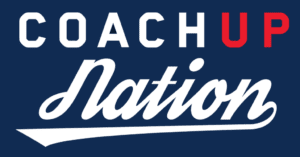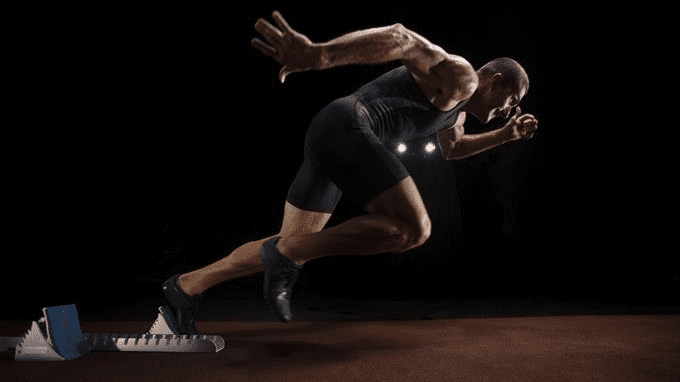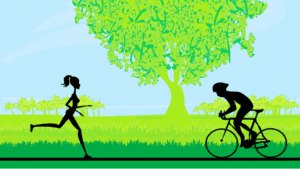Getting faster is a common goal for recreational runners — whether they’re truly competitive or not.
- I want to get better at running. Therefore, I want to be able to run faster.
- I finished my marathon in X:XX:XX. I want to finish the next one in less than that.
- I want to run as fast as, or faster than my friend/ sibling/ spouse/ running partner.
So let’s talk about getting faster, and specifically, about the misconceptions surrounding it. Because what is the point of pursuing a goal if you’re going about it the wrong way?
Here are the three most common myths about becoming a faster runner that I’ve come across over the years. They are holding many runners back, diverting their focus from things that could actually bring results. (We’ll talk about those, too.)
1. MYTH: My running form is bad.
I get these emails so often:
“Hello. I’m looking to hire a running coach. [Gives some background about his or her running history, talks about wanting to get faster, finish a certain race under a certain time, etc.] But I think my running form is really bad and I need a coach to see me run and tell me what I’m doing wrong.”
To which I wish I could reply:
“Hi! When you run, are you putting your left foot in front of the right? Are you then putting the right foot in front of the left? Do you then repeat that all the way to the finish line? If the answer is yes, you are doing it right.”
Saying that would be rude, of course. So I try to explain that “bad running form” often gets a bad rap — and why. We blame a lot more than we should on bad running form: injuries, inability to run faster, even hitting the wall in a marathon. But in the vast majority of cases, that’s an excuse. It’s a myth that has been so generously profitable for the running shoe industry, that many millions of marketing dollars go into keeping it ablaze.
The truth is, you are not a slower runner because you are heel-striking or pronating. You will not get faster as a result of simply changing your stride. But, your form will improve as a result of getting faster, as the body will naturally find the most efficient way of running from start to finish line. That’s how our brains are programmed to work.
This doesn’t apply for those competing at an elite level or professionally, of course. (I don’t think professional or elite runners would waste their time with this blog, anyway.) If you’re in this category, you have your team of experts who analyze your stride, and coaches who work with you on even the slightest tweaks in form. At the professional level, these things matter.
As for those of us who run for our health and race in the back, middle, or even relative front of the pack: we have a lot more to gain from just getting out there to train, consistently. And if running like Phoebe makes you feel happy and free: go for it every once in a while!
2. MYTH: I’m in the wrong running shoes.
Were you fitted for your shoes in a specialty running store? Did an employee see you run and recommend several options based on your stride and running volume? Did you you pick the pair that felt most comfortable? Then chances are, your shoes are not the reason you are not running as fast as you’d like to run.
The same goes for all of running gadgets and gear. A special sports bra with a built-in heart rate monitor or a $600 running watch will not make anyone run faster. Running shorts that leave you a bloody chafed mess at the end of a marathon are not the reason you slowed down and didn’t meet your goal. They were a contributing factor, but the truth is, somewhere out on that course, someone else was also a chafed bloody mess and they were able to push through the pain.
Running gear that fits your body and needs is a huge plus and we are blessed to be living at a time when so much is available to make our running comfortable. But not having the best of the best, or having something that you think is not the best for you, is not what is holding you back.
3. MYTH: I’m not running fast enough in my training.
This is a potentially dangerous way of thinking, as running too hard all the time would most certainly have the exact opposite effect of making you a faster runner. (Read more about slowing down to go fast here.)
Yes, if you are running at a 10 min/ mile pace in all of your training runs, chances are you will not be able to run a half marathon at an 8 min/ mile pace. But this doesn’t mean pushing yourself to run an 8:30 min/ mile in every single run. Before your body adapts to the faster pace, there is a good chance that it would break down with an injury or out of sheer fatigue. Worst case, you’d be looking at needing weeks or months to recover from overtraining syndrome.
So, you’ve read this far (thanks for sticking with me!), and you probably want to know: what, then, is the way to get faster? Well, here it is:
The Secret to Becoming a Faster Runner…
… is simple.
It is a combination of time, consistency, persistence, smart training and proper recovery. That is all!
There are no shortcuts – no gear or tweaks to your running form – that would make you faster. But with hard work, the right kind of work and over time, you will improve. In my training, I always follow these five principles:
Don’t run too hard all the time. Structure your training to incorporate easy days surrounding your hard-work days.
Don’t race too much, or train hard all year long. Take a few weeks or even a couple of months off after a big race. Stay active, but do things for fun. It’s important to have an offseason and de-train a little. You’ll come back refreshed, rested and ready to get after it and become even stronger – and faster – for the new season.
Be consistent. Don’t be one of those people who hang up their running shoes for three months after finishing a marathon, and only get back into “training” 16 weeks out of their next big race. If you’re training for marathons or ultra marathons, chances are you love running. So turn running into a lifestyle.
Be patient. Time is on your side, so give yourself time. Maybe you won’t go from a 4:20 marathon to a 3:40 marathon in one season. But can you can go from 4:20 to 3:50, to 3:35 (!) over the course of two years? Set realistic goals, smash them and celebrate your success!
Enjoy the process. None of the above would be doable unless you really love running. Running is hard, running fast is hard work. If running feels like a chore, or worse, you don’t enjoy it and look forward to lacing up those running shoes… then maybe it’s time to find another hobby.
CoachUp is the safest and easiest way to find a coach for personalized training. With our 100% money-back guarantee and vetted coaches, anyone can achieve their full athletic potential. Find your perfect coach today and become the athlete you want to be!
How useful was this post?
Click on a star to rate it!
Average rating 0 / 5. Vote count: 0
No votes so far! Be the first to rate this post.




